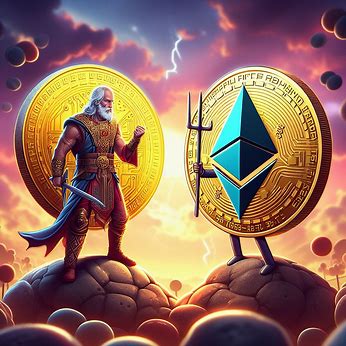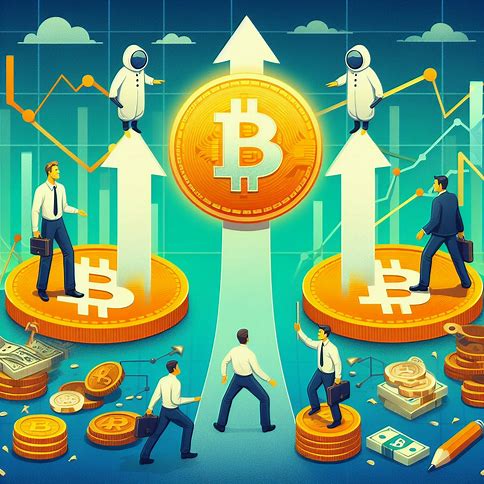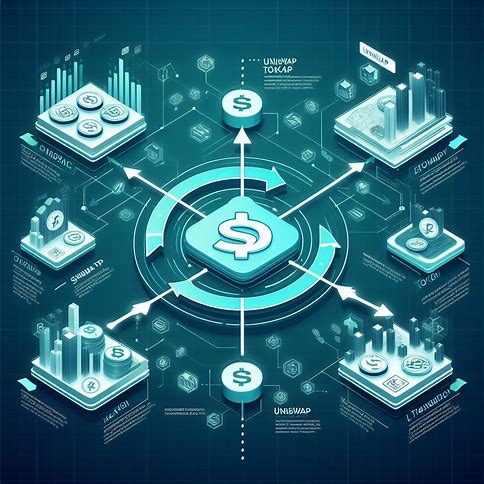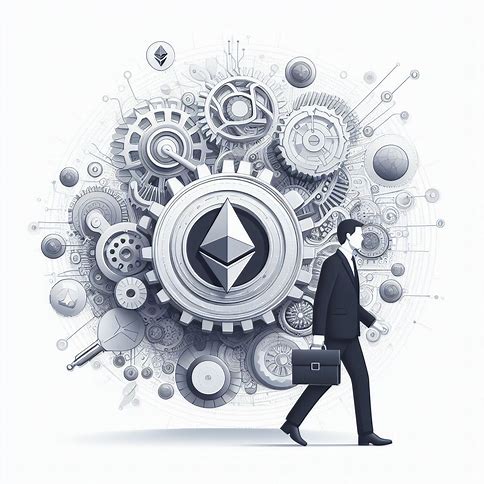Decentralized finance (DeFi) is making great changes in the way we think about financial services. Built on the Ethereum blockchain, DeFi platforms offer a wide range of financial products and services without the need for traditional intermediaries. Here are the top decentralized finance (DeFi) platforms on Ethereum.
1. Uniswap
Uniswap is a decentralized exchange (DEX) protocol that allows users to swap ERC-20 tokens without the need for an order book. It uses an automated market maker (AMM) model, where liquidity providers add funds to liquidity pools and traders can then swap tokens from these pools.
Key features of Uniswap include:
- Permissionless token listing: Anyone can list an ERC-20 token on Uniswap without needing approval.
- Efficient token swaps: Uniswap’s AMM model ensures that token swaps are always executed at the best available price.
- Liquidity provider incentives: Liquidity providers earn a share of the trading fees generated by the pools they contribute to.
2. Compound
Compound is a decentralized lending and borrowing platform that allows users to earn interest on their crypto assets or borrow against them. It uses a system of smart contracts to automate the lending and borrowing process and ensure that interest rates are adjusted based on supply and demand.
Key features of Compound include:
- Support for multiple assets: Users can lend or borrow a variety of popular cryptocurrencies, including ETH, USDC, and DAI.
- Flexible interest rates: Interest rates are determined by an algorithm that takes into account the supply and demand for each asset.
- Secure collateralization: Borrowers must provide collateral in the form of supported cryptocurrencies to secure their loans.
3. MakerDAO
MakerDAO is a decentralized credit platform that allows users to generate DAI, a stablecoin pegged to the value of the US dollar. Users can create DAI by locking up ETH or other supported cryptocurrencies as collateral in a smart contract called a Collateralized Debt Position (CDP).
Key features of MakerDAO include:
1. Decentralized stablecoin: DAI is a fully decentralized stablecoin that maintains its peg to the US dollar through a system of smart contracts and incentives.
2. Over-collateralization: CDPs must be over-collateralized to ensure that there is always enough collateral to cover the value of the DAI generated.
3. Governance by MKR token holders: MakerDAO is governed by holders of the MKR token, who can vote on changes to the platform’s parameters and policies.
4. Aave
Aave is a decentralized lending and borrowing platform that allows users to earn interest on their crypto assets or borrow against them. It offers a wide range of features and services, including flash loans and credit delegation.
Key features of Aave include:
1. Support for multiple assets: Users can lend or borrow a variety of popular cryptocurrencies, including ETH, USDC, and DAI.
2. Flash loans: Aave offers flash loans, which allow users to borrow funds without collateral for a single transaction, as long as the loan is repaid within the same transaction.
3. Credit delegation: Users can delegate their credit to other users, allowing them to borrow funds on their behalf.
Aave has become one of the most popular DeFi lending platforms, with a wide range of assets supported and a growing user base.
Related: Cryptocurrency Exchanges With Best Security Features
5. Curve Finance
Curve Finance is a decentralized exchange (DEX) and automated market maker (AMM) platform that focuses on efficient stablecoin trading. It allows users to trade between different stablecoins with low slippage and fees.
Key features of Curve Finance include:
1. Stablecoin focus: Curve Finance is designed specifically for stablecoin trading pairs, ensuring low slippage and efficient trades.
2. Liquidity provider incentives: Liquidity providers can earn trading fees and CRV tokens by contributing to Curve’s liquidity pools.
3. Governance by CRV token holders: Curve Finance is governed by holders of the CRV token, who can vote on changes to the platform’s parameters and policies.
Curve Finance has become a popular choice for stablecoin traders and liquidity providers, with a growing number of stablecoin pools and integrations with other DeFi platforms.
Related: Cryptocurrency Day Trading Tips For Beginners
6. Synthetix
Synthetix is a decentralized platform that allows users to create and trade synthetic assets, which are financial instruments that track the value of real-world assets such as stocks, commodities, or currencies.
Key features of Synthetix include:
1. Synthetic asset creation: Users can create synthetic assets by staking the platform’s native token, SNX, as collateral.
2. Decentralized trading: Synthetic assets can be traded on Synthetix’s decentralized exchange, without the need for an order book or counterparties.
3. Infinite liquidity: Synthetix uses a pooled collateral model, which ensures that there is always enough liquidity for trading synthetic assets.
Synthetix has gained popularity as a way for users to gain exposure to a wide range of assets without the need to hold them directly, and has become an important part of the DeFi ecosystem.
7. Yearn Finance
Yearn Finance is a suite of DeFi products that focuses on yield optimization and aggregation. It allows users to automatically earn the highest yields available across various DeFi platforms, without the need for constant monitoring and manual intervention.
Key features of Yearn Finance include:
1. Yield optimization: Yearn Finance’s core product, Vaults, automatically moves users’ funds between different DeFi platforms to maximize yields.
2. Aggregation of DeFi services: Yearn Finance aggregates various DeFi services, such as lending and borrowing, to provide users with a seamless and efficient experience.
3. Governance by YFI token holders: Yearn Finance is governed by holders of the YFI token, who can vote on changes to the platform’s parameters and policies.
8. Balancer
Balancer is a decentralized exchange (DEX) and automated market maker (AMM) platform that allows users to create custom liquidity pools with multiple tokens and custom weightings.
Key features of Balancer include:
1. Custom liquidity pools: Users can create liquidity pools with up to 8 different tokens and custom weightings for each token.
2. Automatic portfolio rebalancing: Balancer automatically rebalances liquidity pools to maintain the desired token weightings, ensuring that the pool remains efficient and profitable for liquidity providers.
3. Governance by BAL token holders: Balancer is governed by holders of the BAL token, who can vote on changes to the platform’s parameters and policies.
9. Bancor
Bancor is a decentralized exchange (DEX) and automated market maker (AMM) platform that allows for the creation of custom tokens and trading pairs, with built-in liquidity and price discovery.
Key features of Bancor include:
1. Custom token creation: Users can create custom tokens on the Bancor platform, with built-in liquidity and price discovery.
2. Single-sided liquidity provision: Liquidity providers can contribute to liquidity pools with a single token, rather than the usual requirement of providing equal values of two tokens.
3. Impermanent loss protection: Bancor offers impermanent loss protection for liquidity providers, helping to mitigate the risks associated with providing liquidity to AMM platforms.
10. 0x
0x is a decentralized exchange (DEX) protocol that allows for the creation of custom DEX applications and the aggregation of liquidity from multiple sources.
Key features of 0x include:
1. DEX aggregation: 0x can aggregate liquidity from multiple DEXes, allowing for more efficient trading and better prices for users.
2. Custom DEX creation: Developers can use the 0x protocol to create custom DEX applications, with their own unique features and user interfaces.
3. Governance by ZRX token holders: 0x is governed by holders of the ZRX token, who can vote on changes to the protocol’s parameters and policies.
Key Takeaways
Decentralized finance (DeFi) platforms on Ethereum offer a wide range of financial services, including:
1. Decentralized exchanges (DEXes): Platforms like Uniswap, Curve Finance, Balancer, and 0x allow users to trade cryptocurrencies without the need for traditional intermediaries.
2. Lending and borrowing: Platforms such as Compound and Aave enable users to earn interest on their crypto holdings or borrow funds using their crypto as collateral.
3. Stablecoins: MakerDAO’s DAI is a decentralized stablecoin pegged to the US dollar, providing a stable medium of exchange for DeFi transactions.
3. Synthetic assets: Synthetix allows users to create and trade synthetic assets that track the value of real-world assets, such as stocks or commodities.
4. Yield optimization: Yearn Finance helps users maximize their DeFi yields by automatically moving funds between different platforms to earn the highest returns.
Frequently Asked Questions
1. What is DeFi?
DeFi, short for decentralized finance, refers to a new paradigm of financial services built on blockchain technology, particularly Ethereum. DeFi platforms use smart contracts to automate financial transactions and eliminate the need for traditional intermediaries, such as banks or brokerages.
2. How do I access DeFi platforms?
To access DeFi platforms, you’ll need a compatible Ethereum wallet, such as MetaMask, and some ETH or other supported cryptocurrencies to get started. Simply connect your wallet to the DeFi platform of your choice, and you can begin using their services, such as trading, lending, or borrowing.
3. Are DeFi platforms safe?
DeFi platforms are generally considered safe, as they are built on blockchain technology and use smart contracts to automate transactions. However, as with any financial service, there are always risks involved. It’s important to do your own research, understand the potential risks, and never invest more than you can afford to lose.
4. What are the benefits of using DeFi platforms?
DeFi platforms offer several benefits over traditional financial services, including:
1. Greater accessibility: Anyone with an internet connection and a compatible wallet can access DeFi services, regardless of their location or financial status.
2. Transparency: All transactions on DeFi platforms are recorded on the blockchain, ensuring full transparency and accountability.
3. Control: Users have complete control over their funds and can interact with DeFi platforms without the need for intermediaries.
4. Innovation: The open-source nature of DeFi encourages rapid innovation and the development of new financial products and services.
5. What are the risks of using DeFi platforms?
Some of the risks associated with using DeFi platforms include:
1. Smart contract vulnerabilities: If there are bugs or vulnerabilities in the smart contracts underlying a DeFi platform, it could lead to loss of funds.
2. Liquidity risks: Some DeFi platforms may have low liquidity, making it difficult to enter or exit positions at desired prices.
3. Collateral risks: DeFi lending and borrowing platforms often require users to provide collateral, which could be liquidated if the value of the collateral falls below a certain threshold.
4. Regulatory risks: The regulatory for DeFi is still growing, and there is a risk that certain platforms or services could be subject to future regulations or legal action.










